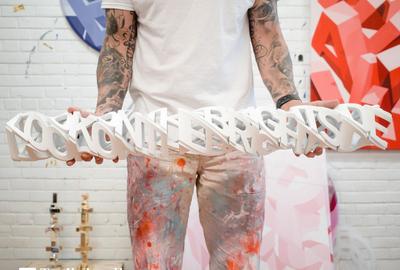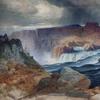Steve Martin Co-Curates Traveling Exhibition of Mystical Landscapes by Canadian Artist Lawren Harris
- LOS ANGELES, California
- /
- October 27, 2015

On October 10, the Hammer Museum debuted The Idea of North: The Paintings of Lawren Harris, the first major U.S. exhibition of paintings by Canadian artist Lawren Stewart Harris (1885-1970). Co-organized by the Hammer and the Art Gallery of Ontario (AGO) in Toronto, the show is curated by musician, actor and writer Steve Martin. Martin is working in collaboration with Cynthia Burlingham, Deputy Director, Curatorial Affairs at the Hammer Museum, and Andrew Hunter, Fredrik S. Eaton Curator of Canadian Art at the AGO.

On view at the Hammer Museum in Los Angeles from October 11, 2015 to January 24, 2016, the exhibition will tour to the Museum of Fine Arts, Boston (March 12 – June 12, 2016) followed by the AGO (July 2 – September 11, 2016).
Though largely unknown in the United States, Lawren Harris was a founding member of the Canadian Group of Seven and a major figure in the history of twentieth-century Canadian art. The exhibition is comprised of more than 30 of Harris’s most significant northern landscapes from the 1920s and 1930s, drawn from major public and private collections across Canada including the AGO, the Thomson Collection at the AGO, the National Gallery of Canada, and the McMichael Canadian Art Collection.
The Idea of North: The Paintings of Lawren Harris examines the defining period for the artist as a leading modernist painter, an innovator on par with contemporaries Marsden Hartley, Edward Hopper, and Georgia O’Keeffe. Focusing on three main regions—the north shore of Lake Superior, the Rocky Mountains, and the Eastern Arctic—the paintings offer a bold “idea of north,” to borrow a phrase from musician and broadcaster Glenn Gould from which the exhibition draws its name. During the 1920s Harris progressed from a defiantly nationalistic interpretation of the northern landscape to a more universal conception that saw the land as a source of inspiration for a clear and refined spiritual vision. Paintings such as North Shore, Lake Superior (1926) and Mt. Lefroy (1930) remain haunting and clear statements of an individual striving to transcend the surface to a more profound reality.

Writing in the exhibition catalogue, Steve Martin describes the significance of this period of Harris’s career: “A painter of the backwoods and the streets of Toronto, Harris went by boxcar, boat, and boot to the Canadian north, and it provided his work with the necessary elevation. He stopped making scenes of shady lanes and streets with strolling couples, and almost every living thing vanished from his pictures. He now began a series of paintings that achieved—then surpassed—his dream of a national art of Canada. But these new scenes, devoid of life except for the occasional mossy plain, are not dead. The absence of organic things in the mountains, lakes, and icebergs he now painted created a paradoxical effect: the pictures came to life.”
“When Steve Martin first introduced us to Lawren Harris’s paintings, I was struck by their astonishing beauty and surprised by how virtually unknown this Canadian artist is in the U.S.,” said Ann Philbin, Director of the Hammer Museum. “Following in the tradition of artist-curated exhibitions like Robert Gober’s Charles Burchfield exhibition and the ongoing Houseguest series, we invited Steve to apply his deep knowledge of twentieth-century art to introduce an American audience to Harris’s work.”
The exhibition is accompanied by a fully-illustrated catalogue with essays by Steve Martin, Cynthia Burlingham, Andrew Hunter, and Karen E. Quinn, senior historian and curator, art and culture at the New York State Museum, Albany. Published by DelMonico Books-Prestel, the monograph includes an artist chronology and extensive bibliography.


270x400_c.jpg)



















